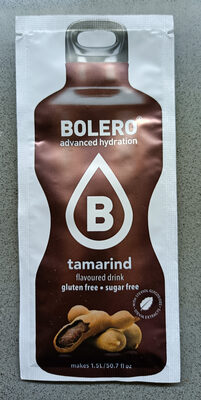Bolero tamarind - 9 g
This product page is not complete. You can help to complete it by editing it and adding more data from the photos we have, or by taking more photos using the app for Android or iPhone/iPad. Thank you!
×
Barra-kodea: 3800048223457 (EAN / EAN-13)
Kopurua: 9 g
Ontziratzea: en:Saquet alumini
Markak: Bolero
Kategoriak: en:Beverages, en:Instant beverages
Etiketak, ziurtagiriak, sariak: en:No gluten
Origin of ingredients: Bulgaria
Manufacturing or processing places: Bulgària
Dendak: Amazon
Matching with your preferences
Ingurumena
Ontziratzea
Transportation
Report a problem
Datuen iturria
Product added on by kiliweb
Last edit of product page on by axic1976.
Produktuaren orria -gatik editatua elcoco, openfoodfacts-contributors, roboto-app, yuka.BJ5IJPSVMOMQOvTI06su5TypS8bfDfgGAHkoog, yuka.Wm80OE9ib1BqUDR6dVBjNytUYlhvL0ZFK0x5MWZVaUxPK29LSVE9PQ, yuka.sY2b0xO6T85zoF3NwEKvlk9id4CEpS76ChLkq32L596uDqy0R4pu8tnBDas.







